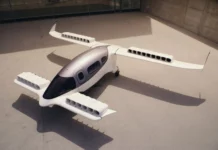FAA Simplifies Avionics Upgrades
The FAA now will allow airplane owners and operators to replace their vacuum-driven attitude indicators with new electronic devices without a vacuum-driven backup, as long as there’s a backup power source, the agency said in October. The new policy applies to aircraft weighing less than 6,000 pounds. The FAA said electronic attitude indicators are more reliable and not prone to “insidious” gradual failures like their ancestors. The action “is part of the FAA’s effort to increase the flexibility of improving aircraft safety quickly and efficiently with new technological advancements,” the agency said in a Facebook post.
Drone Registry In The Works
In anticipation of up to a million drones being bought as holiday gifts this December, the FAA in October put together a joint industry-government task force to come up with a registration procedure before the end of the year. FAA officials said they are logging about 100 reports per month of drone conflicts with aircraft. They hope the registration process will help ensure that buyers know the rules, and make enforcement easier. A comprehensive proposal for governing the use of drones in the national airspace is expected sometime next summer.
Remote Tower Test In Colorado
Fort Collins-Loveland Municipal Airport will be the first test site for the FAA’s new Virtual Air Traffic Control Tower technology, which enables controllers to handle airport traffic from a remote facility, the agency announced in October. Formerly, the field was non-towered. The new system, which will be operational by next summer, will provide an “enhanced level of air safety” at a cost “dramatically lower” than traditional towers, said the Colorado Division of Aeronautics. A remote tower operated by Saab has been in test mode in Virginia since last summer, but the Loveland facility will be the first test of the FAA’s own system. Saab’s system has been fully operational since April at Ornskoldsvik Airport, in Sweden.
Fatal Crash Blamed On Overloading
A de Havilland DHC-3 Otter that crashed in Soldotna, Alaska, in July 2013, was over-weight by more than 400 pounds and its aft-CG limit had been exceeded, the NTSB said in its probable-cause report in October. Contributing to the accident was the FAA’s “failure to require weight-and-balance documentation for this type of air-taxi flight,” the safety board said. The Otter had been loaded by the pilot, who was also the owner, with nine passengers, plus luggage, food, and supplies. A video showed that after takeoff, the Otter’s angle of attack steadily increased and its airspeed decayed for 11 seconds, then an apparent stall occurred, and the airplane rolled to the right and crashed. There were no survivors.
NTSB Targets Loss-Of-Control Accidents
The NTSB held a safety forum in October to address loss of control, which is the number-one cause of fatal crashes in fixed-wing general aviation aircraft. The panels included pilots, instructors, industry representatives and GA advocates as well as officials from the NTSB and FAA. “The participants at this forum are the people who can really do something about this problem,” NTSB board member Earl Weener told AVweb. “We’ve been pushing for recognition of this issue for several years, and now is really an opportune time to see some changes that will reduce the number of these loss-of-control accidents.” A video of the forum is available at the NTSB website.
NOTAMS
Boeing’s KC-46 next-generation aerial-refueling tanker flew for the first time, in September…The FAA fined a Chicago aerial-photography company $1.9 million, saying they used drones commercially without permission…In September, the one-of-a-kind Bugatti 100p made its second flight, this one uneventfully, after the first flight in August ended in an off-runway excursion and damage to the props and spinner…Aircraft designer Burt Rutan won the 2015 Wright Brothers Memorial Trophy…Terri Watson was named new executive director of LightHawk…Breaking news in general aviation can be found at www.avweb.com.




